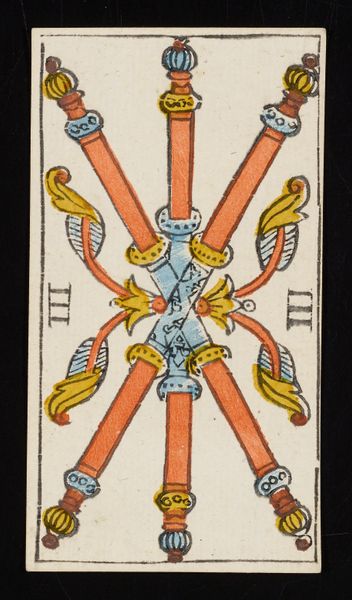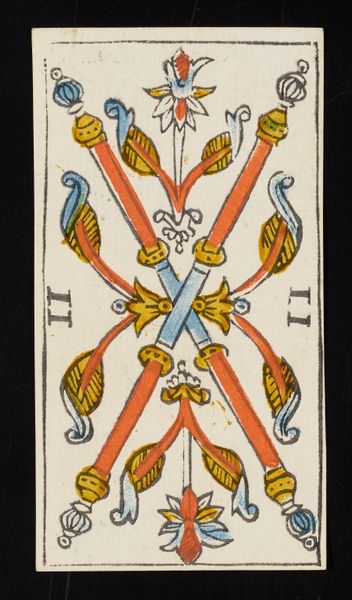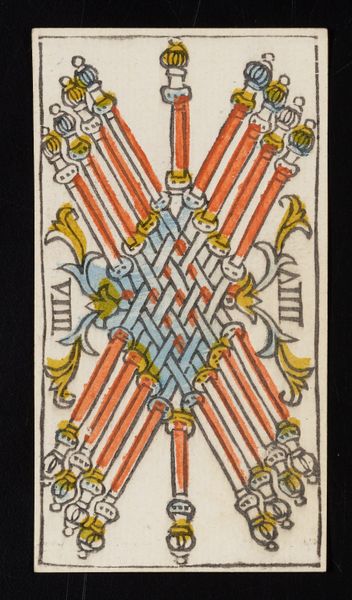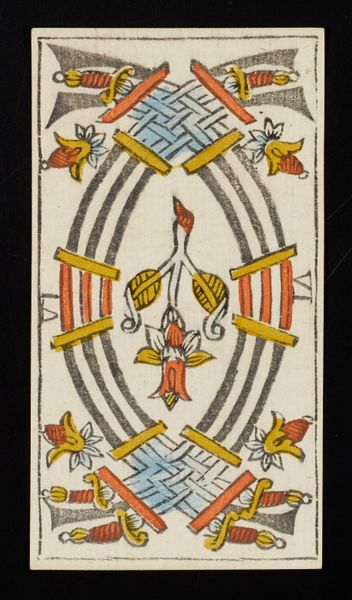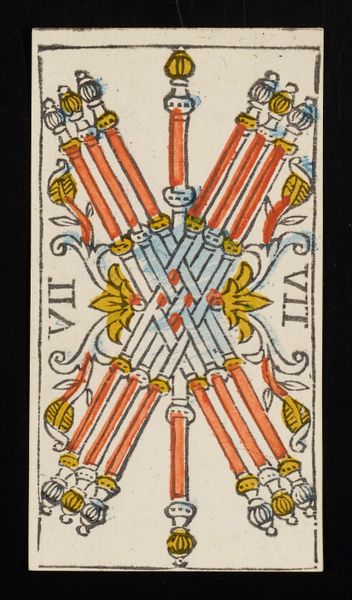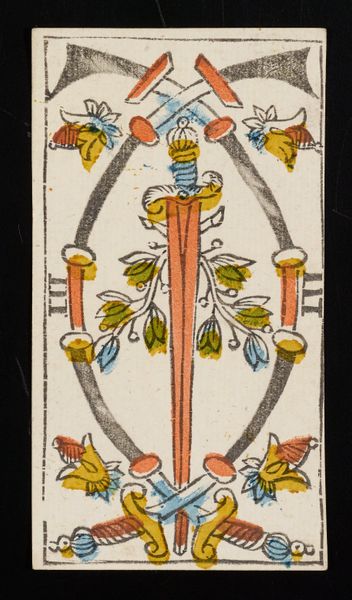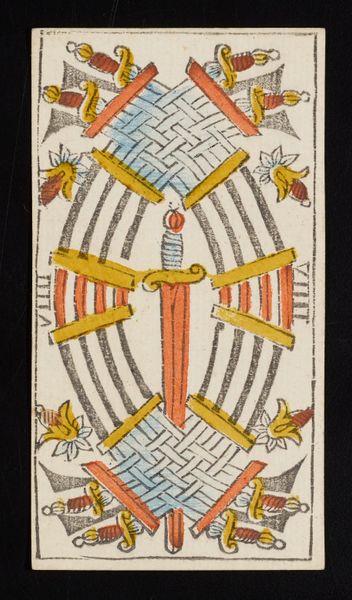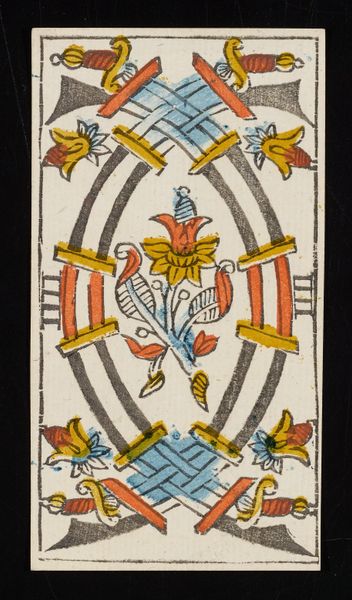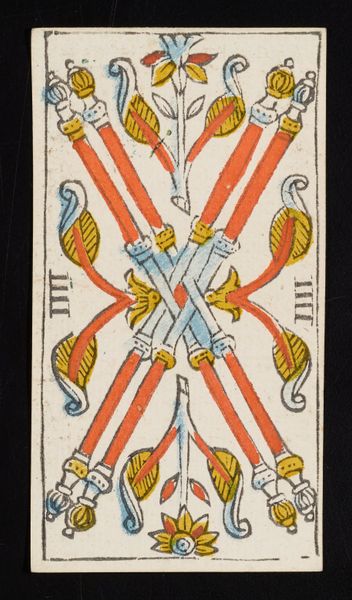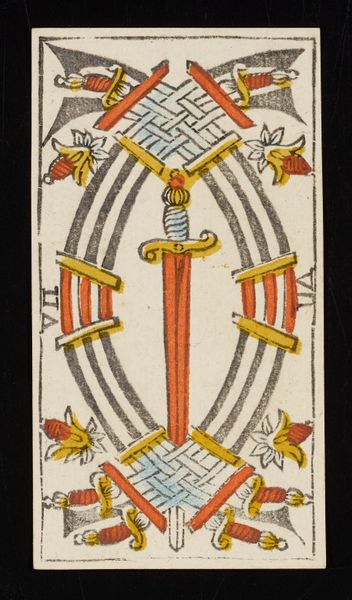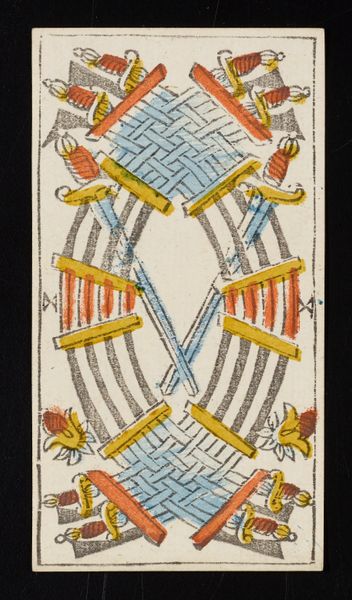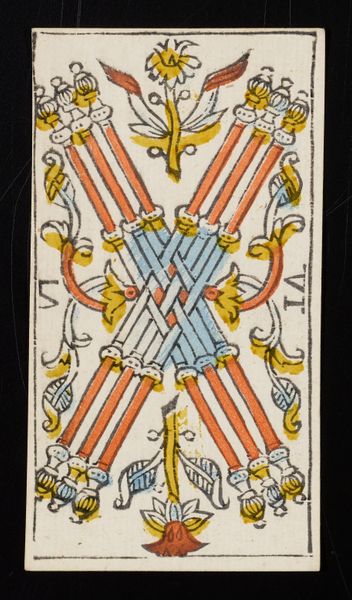
Dimensions: 4 7/16 x 2 7/16 in. (11.27 x 6.19 cm) (image, sheet)4 5/8 x 2 1/2 in. (11.75 x 6.35 cm) (sheet, each)
Copyright: Public Domain
Editor: Here we have Claude Burdel's "Five of Batons," a playing card engraving dating back to 1751. I’m immediately drawn to the arrangement; the batons create a dynamic star-like formation. What compositional elements strike you most in this print? Curator: The piece displays a calculated organization through line, shape, and color. The five batons are rendered in a warm reddish-orange which are bisected and intersected by a contrasting woven blue pattern in the center. These geometric volumes suggest a rigorous structural integrity. Note also how the ornamental flourishes, in particular the foliate forms, serve as a counterpoint to this linearity. How does that contrast affect your interpretation? Editor: That’s interesting, I hadn’t considered how the soft curves balance out all the straight lines. Does the symmetry of the whole form reinforce its structural integrity? Curator: Absolutely. We see bilateral symmetry operating as a stable force, but it is subtly disrupted by the individual orientation of each baton, thereby complicating the overall sense of order. It's not static, but dynamic symmetry. This interplay is essential to its visual complexity. Editor: So, it's this combination of strict form and subtle variations that makes the image so captivating. Curator: Precisely. We’re experiencing visual tension generated from those elements working against each other. The card operates within defined parameters and defies that limitation, wouldn’t you say? Editor: I do! It really demonstrates how even a seemingly simple image can be a rich site for visual analysis. Thanks!
Comments
No comments
Be the first to comment and join the conversation on the ultimate creative platform.
